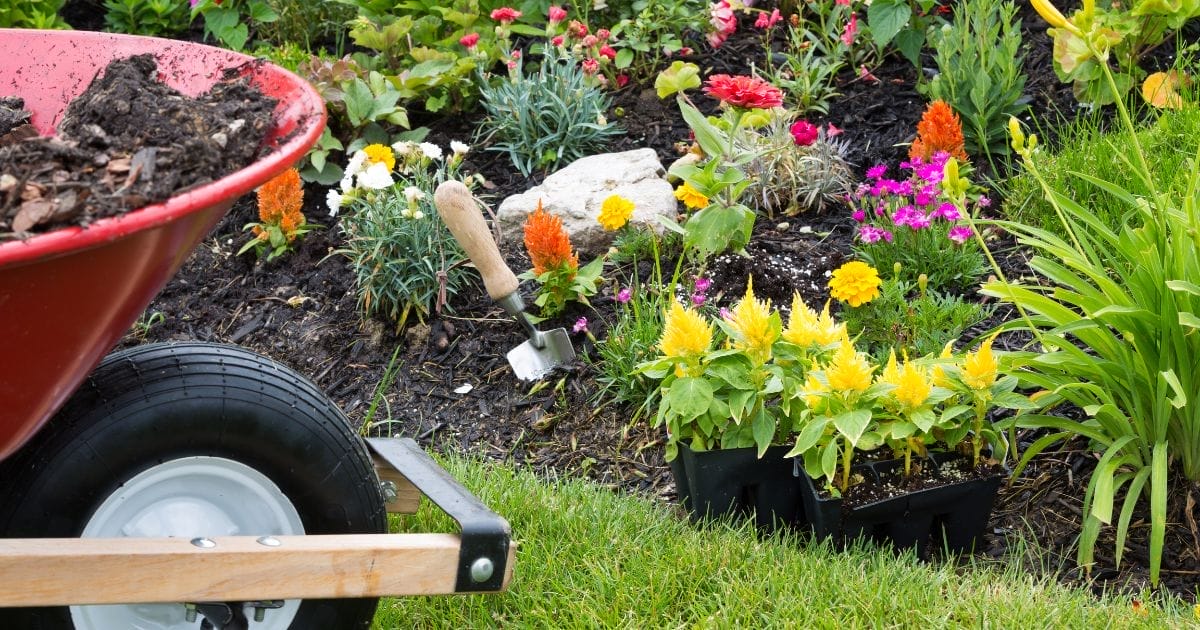Bloom Into Spring: Wake Up Your Yard for a Beautiful Season Ahead
The concept of spring cleaning applies not only to the inside of your home, but also the outside. Winter takes a toll on our lawns, shrubs, and plants, and they deserve some TLC so they can look their best for spring and summer. Proper early-season care means your yard will be set up to be healthy for the rest of the year. It can be a lot of work, but we’ve listed some of the steps to help simplify the spring landscaping process for you. If you’d rather hire a landscaper, now is the time to schedule appointments for estimates to get a good sense of how much it will cost versus the time and money it would take for you to do it yourself. Read on for more details and tips.
Assess Your Yard’s Needs
Take a walk around to note any damage that needs attention. Your lawn may have one or more common winter problems, which include damage to the grass caused by:
- Road salt – identified by brown or orange-hued grass
- Snow mold – identified by patches of gray
- Rodents – identified by surface tunnels, lines in the grass, or “volcanos” of soil
All of these issues can be treated. The grass affected by road salt usually needs a little extra watering to break down the salts. Moldy grass needs to be dried out. Gentle raking will loosen matted grass and give healthy blades room to grow. Bare spots created by moles or voles can be reseeded, and you’ll see fresh grass growing when the weather really warms up.
Clean-up is the first big step. Remove all the debris winter left behind, such as leaves, branches, and dead foliage in the flower beds. Sweep and power wash the patio, deck, and walkways.
Planning Your Spring Yard Refresh
A big part of outlining your landscaping plan is determining where you enjoy spending time and thinking about what would make that area more appealing. Additionally, stand at the curb and look at your home and lawn as a passerby might. Which areas can you see from the street that would benefit from more color or styling? Do the same from your back door looking into your backyard. Would you place the same flowers and plants in the same spots as previous years or change it up?
Check your gardening tools and supplies inventory, everything from gardening gloves, top soil, and seeds to rakes, pruning shears, and trowels. This is the time when home improvement stores and nurseries run sale promotions, so you’re more likely to find deals on anything you need to purchase.

Getting to the Good Stuff
Whether you are a beginner or experienced home gardener, choosing flowers and plants for your outdoor spaces can be fun when you have a vision in mind. It just takes a bit of research and consultation to choose the right ones that will thrive. Keep these guidelines in mind:
- Know the plants that will work best for the amount of shade and sunlight they will receive, as well as soil type;
- Be selective about annuals and perennials. You can save time by filling in large spaces with perennials that will bloom year after year and cut down on your time spent planting in the future;
- Incorporate colorful containers for a visual impact that stands the test of time. Simple boxwoods, hostas, and similar greenery need little to no upkeep in planters that give your home a distinct style.
After the planting is complete, you can create welcoming areas for family and friends to enjoy the beautiful surroundings. Even if you are not replacing patio furniture, you can give it a refresh with a coat of spray paint to change the colors, new outdoor rugs, and cushions or pillows. Lighting is important for setting a tone. Set up a decorative bird feeder to attract feathered visitors to your oasis, String lights along railings or hung from the deck or poles will ensure a gathering can last comfortably past sunset.
Maintaining Your Yard Throughout the Season
Now that you have your yard the way you want it, maintaining it all summer will make the chores in the fall and next year easier. Set up a regular watering schedule. In summer, don’t mow the grass too short. Leaving the grass taller will shade the soil and reduce water evaporation, which leads to a healthier lawn. Be sure to deadhead flowering plants, which will encourage new growth. Keep your eyes out for pests and unhealthy spots in the lawn. You can take action as needed so that trouble doesn’t spread.
What are your favorite plants and flowers that thrive in our New Hampshire climate? If you have any time- and energy-saving gardening hacks, we want to hear them! Share your tips with our community on Facebook and Instagram.